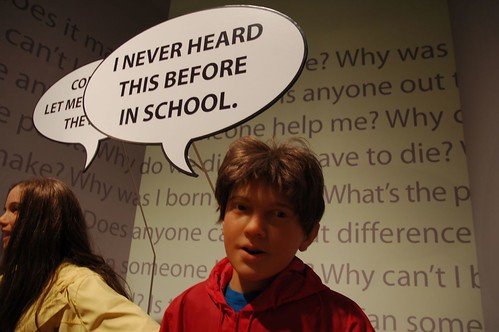If you look at the image on the left, you will notice the four key components of technology integration, what Collis & moonen (2002) refer to as key components of “flexible learning in a digital world”.
The components ( institution, implementation, pedagogy, and technology ) are nested in each other, which means that each depends on and feeds from the other. The approach for the flexible learning can be seen in a top-down, that institution-wide to technological aspect, or in a bottom-up, that is from the technological aspect all the way up to the institution.
The 4 E Model as a Guide:
Collis & Moonen suggest a 4 E model that will guide anyone who wants to integrate flexible learning in each and all key components
Ease of use
Environment
Personal Engagement
Educational Effectiveness
Now, I will not go into details of the activity-flexibility abstract framework and its U pedagogical approach. All I want to focus on here is how the 4 E model would guide the teachers in adopting/adapting and using technology in their teaching contexts, be it a complex, core technology such as a CMS ( content-management system) or a complementary technology tool such as PowerPoint, word processor, or a web2.0 tool .
E for Ease of Use:

The ease of use of the technology tool can be viewed from the teacher’s and student’s perspective . Is the teacher capable to use the tool with relative ease and exploit it for the students’ benefits? Is the student able to use the tool easily so as to focus on the intended task and not on the tool features?
Are the activities associated with the tool easy to accomplish? Will the students easily work through the activities supported by the tool ?
When a teacher decides to use this tool or that (X or Y) he/she should ask the question of : Is the tool easy to use? if not should there be an introductory activity to help students get the hang of it before using it for the subject or course?
E for Environment

Environment is a broad topic and it encompasses the educational institution or organization, the culture or socio-cultural aspect, and everything ( politics…) that affects holistically the adoption and adaption of the pedagogy and technology and the process of implementation.
Key questions such as : How does the educational institution, policy makers, or others in the position of power affect the implementation and use of technology and the associated pedagogy? Does the educational institution the teacher works in support the use of technology to enhance learning? or is he/she a pioneer?
In either case, the teacher who wishes to implement technology to enhance learning should not disregard the effect of the environment on the implementation process and should be keen on what is the best approach to use technology ( in-class access, home access, guided access, self-access…. )
E for personal Engagement

This E is tightly related to the teacher’s personal and professional engagement with the issue of technology in education and flexible learning as a whole. What drives some teachers to be engaged in technology to enhance learning? Is there any teaching beliefs behind that engagement? One should better gauge his or her beliefs on teaching with technology .
E for Educational Effectiveness

If a teacher decides to use a particular tool for learning and teaching, what is its educational effectiveness? The more the teacher sees that there is educational effectiveness, the more likely the teachers uses that tool . So, the underlying question here is: What is the pedagogical implication of this technological tool when exploited properly? How can technology enhance the learning process that was impossible or improbable before?
I believe that every teacher, administrator, or educational policy maker should be guided by the 4 E model not only in flexible learning but also in all technological pedagogies.
Now all you need to do is to select one tool that you used before with your students and compare it against the 4 E model. Do you think it was worth it using that tool ? Do you think it added anything worthwhile to the learning process and outcome?
Reference: Collis & Moonen (2002). Flexible Learning in a Digital World. Routledge


This is good news.Advancement, information and knowledge are replacing capital and energy as the primary wealth-creating assets and so we must adapt to such changes or fold.
ReplyDeleteThis blog is very insightful. I believe that aside from students, employees will also benefit from elearning technology as many companies now are using corporate learning solutions to train their workers in learning new skills for development.
ReplyDeleteThanks John :)
ReplyDeleteSounds very interesting! I will check this out!
ReplyDelete